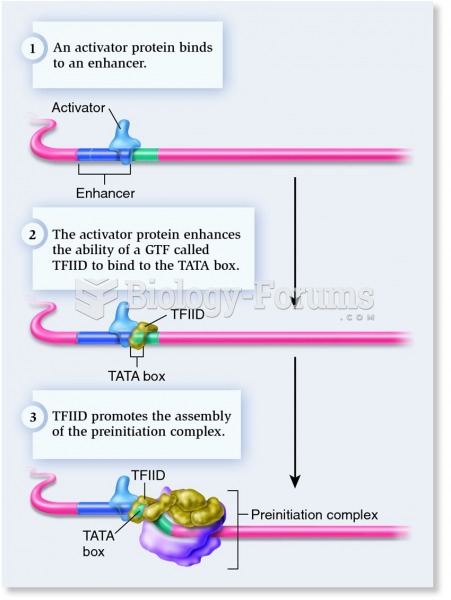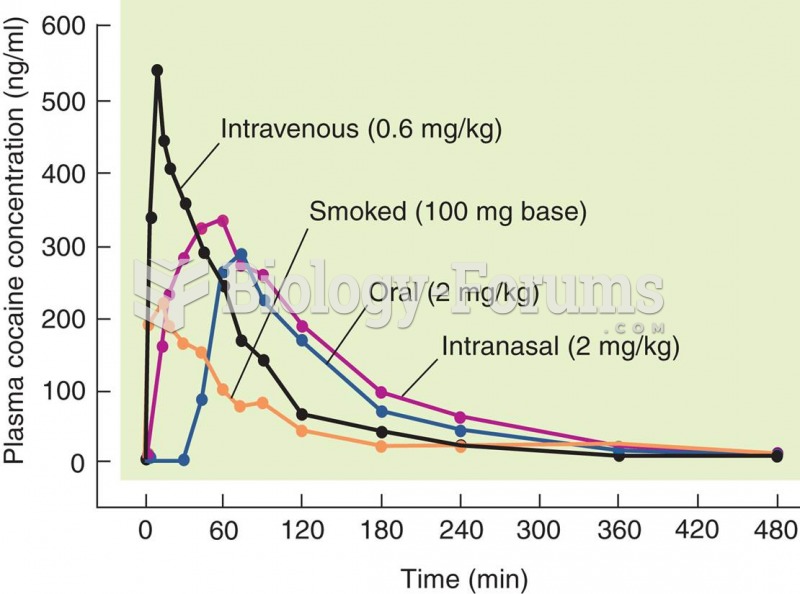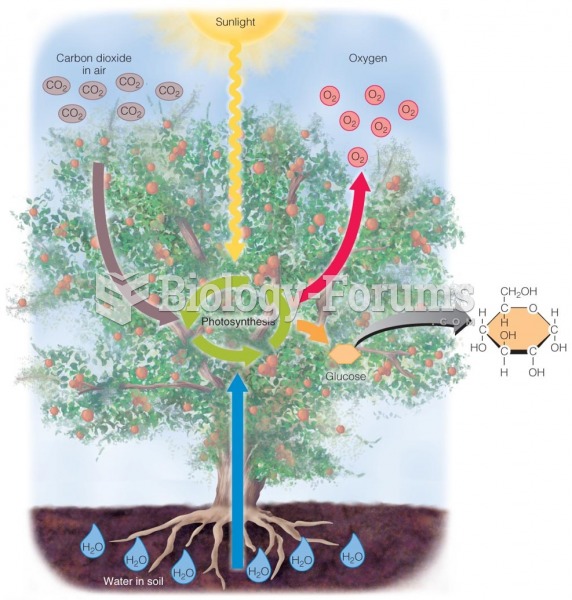Answer to Question 1
To function optimally, the body must maintain blood glucose within limits that permit the cells to nourish themselves. If blood glucose falls below normal, a person may become dizzy and weak; if it rises above normal, a person may become fatigued. Left untreated, fluctuations to the extremeseither high or lowcan be fatal.
Blood glucose homeostasis is regulated primarily by two hormones: insulin, which moves glucose from the blood into the cells, and glucagon, which brings glucose out of storage when necessary. After a meal, as blood glucose rises, special cells of the pancreas respond by secreting insulin into the blood. In general, the amount of insulin secreted corresponds with the rise in glucose. As the circulating insulin contacts the body's cells, receptors respond by ushering glucose from the blood into the cells. Most of the cells take only the glucose they can use for energy right away, but the liver and muscle cells can assemble the small glucose units into long, branching chains of glycogen for storage. The liver cells also convert extra glucose to fat. Thus elevated blood glucose returns to normal levels as excess glucose is stored as glycogen and fat.
When blood glucose falls (as occurs between meals), other special cells of the pancreas respond by secreting glucagon into the blood. Glucagon raises blood glucose by signaling the liver to break down its glycogen stores and release glucose into the blood for use by all the other body cells.
Another hormone that signals the liver cells to release glucose is the fight-or-flight hormone, epinephrine. When a person experiences stress, epinephrine acts quickly to ensure that all the body cells have energy fuel in emergencies. Among its many roles in the body, epinephrine works to release glucose from liver glycogen to the blood.
Answer to Question 2
Normally, the intestinal cells produce enough of the enzyme lactase to ensure that the disaccharide lactose found in milk is both digested and absorbed efficiently. Lactase activity is highest immediately after birth, as befits an infant whose first and only food for a while will be breast milk or infant formula. In the great majority of the world's populations, lactase activity declines dramatically during childhood and adolescence to about 5 to 10 percent of the activity at birth. Only a relatively small percentage (about 30 percent) of the people in the world retain enough lactase to digest and absorb lactose efficiently throughout adult life.
When more lactose is consumed than the available lactase can handle, lactose molecules remain in the intestine undigested, attracting water and causing bloating, abdominal discomfort, and diarrheathe symptoms of lactose intolerance. The undigested lactose becomes food for intestinal bacteria, which multiply and produce irritating acid and gas, further contributing to the discomfort and diarrhea.
As mentioned, lactase activity commonly declines with age. Lactase deficiency may also develop when the intestinal villi are damaged by disease, certain medicines, prolonged diarrhea, or malnutrition. Depending on the extent of the intestinal damage, lactose malabsorption may be temporary or permanent. In extremely rare cases, an infant is born with a lactase deficiency, making feeding a challenge.
The prevalence of lactose intolerance varies widely among ethnic groups, indicating that the trait has a genetic component. The prevalence of lactose intolerance is lowest among Scandinavians and other northern Europeans and highest among native North Americans and Southeast Asians. An estimated 30 million to 50 million people in the United States are lactose intolerant.
Managing lactose intolerance requires some dietary changes, although total elimination of milk products usually is not necessary. Excluding all milk products from the diet can lead to nutrient deficiencies because these foods are a major source of several nutrients, notably the mineral calcium, vitamin D, and the B vitamin riboflavin. Fortunately, many people with lactose intolerance can consume foods containing up to 6 grams of lactose ( cup milk) without symptoms. The most successful strategies are to increase intake of milk products gradually, consume them with other foods in meals, and spread their intake throughout the day. In addition, yogurt containing live bacteria seems to improve lactose intolerance. A change in the type, number, and activity of GI bacterianot the reappearance of the missing enzymeaccounts for the ability to adapt to milk products. Importantly, most lactose-intolerant individuals need to manage their dairy consumption rather than restrict it.
In many cases, lactose-intolerant people can tolerate fermented milk products such as yogurt and kefir. The bacteria in these products digest lactose for their own use, thus reducing the lactose content. Even when the lactose content is equivalent to milk's, yogurt produces fewer symptoms. Hard cheeses, such as cheddar, and cottage cheese are often well tolerated because most of the lactose is removed with the whey during manufacturing. Lactose continues to diminish as cheese ages.
Many lactose-intolerant people use commercially prepared milk products (such as Lactaid) that have been treated with an enzyme that breaks down the lactose. Alternatively, they take enzyme tablets with meals or add enzyme drops to their milk. The enzyme hydrolyzes much of the lactose in milk to glucose and galactose, which lactose-intolerant people can absorb without ill effects.
Because people's tolerance to lactose varies widely, lactose-restricted diets must be highly individualized. A completely lactose-free diet can be difficult because lactose appears not only in milk and milk products but also as an ingredient in many nondairy foods such as breads, cereals, breakfast drinks, salad dressings, and cake mixes. People on strict lactose-free diets need to read labels and avoid foods that include milk, milk solids, whey (milk liquid), and casein (milk protein, which may contain traces of lactose). They also need to check all medications with the pharmacist because 20 percent of prescription drugs and 5 percent of over-the-counter drugs contain lactose as a filler.
People who consume few milk products must take care to meet riboflavin, vitamin D, and calcium needs. Later chapters on the vitamins and minerals offer help with finding good nonmilk sources of these nutrients.
Answer to Question 3
Unlike high-carbohydrate diets rich in added sugars that can alter blood lipids to favor heart disease, those rich in whole grains, legumes, vegetables, and fruits may protect against heart attack and stroke by lowering blood pressure, improving blood lipids, and reducing inflammation. Such diets are low in animal fat and cholesterol and high in dietary fibers, vegetable proteins, and phytochemicalsall factors associated with a lower risk of heart disease.
High-fiber foodsespecially whole grainsplay a key role managing and preventing type 2 diabetes. When soluble fibers trap nutrients and delay their transit through the GI tract, glucose absorption is slowed, which helps to prevent glucose surge and rebound.
Dietary fibers also enhance the health of the large intestine. The healthier the intestinal walls, the better they can block absorption of unwanted constituents. Taken with ample fluids, insoluble fibers such as cellulose (as in cereal brans, fruits, and vegetables) increase stool weight, ease passage, and reduce transit time.
Research studies suggest that a high-fiber diet protects against colon cancer. When a large study of diet and cancer examined the diets of more than a half million people in ten countries for several years, the researchers found an inverse association between dietary fiber and colon cancer. People who ate the most dietary fiber (35 grams per day) reduced their risk of colon cancer by 40 percent compared with those who ate the least fiber (15 grams per day). Importantly, the study focused on dietary fiber, not fiber supplements or additives, which lack valuable nutrients and phytochemicals that also help protect against cancer. Plant foodsvegetables, fruits, and whole-grain productsreduce the risks of colon and rectal cancers.
Fibers may help prevent colon cancer by diluting, binding, and rapidly removing potential cancer-causing agents from the colon. In addition, soluble fibers stimulate bacterial fermentation of resistant starch and fiber in the colon, a process that produces short-chain fatty acids that lower the pH. These small fat molecules activate cancer-killing enzymes and inhibit inflammation in the colon.
High-fiber and whole-grain foods may help a person to maintain a healthy body weight. Foods rich in fiber tend to be low in fat and added sugars and can therefore prevent weight gain and promote weight loss by delivering less energy per bite. In addition, as fibers absorb water from the digestive juices, they swell, creating feelings of fullness, lowering food intake, and delaying hunger.







